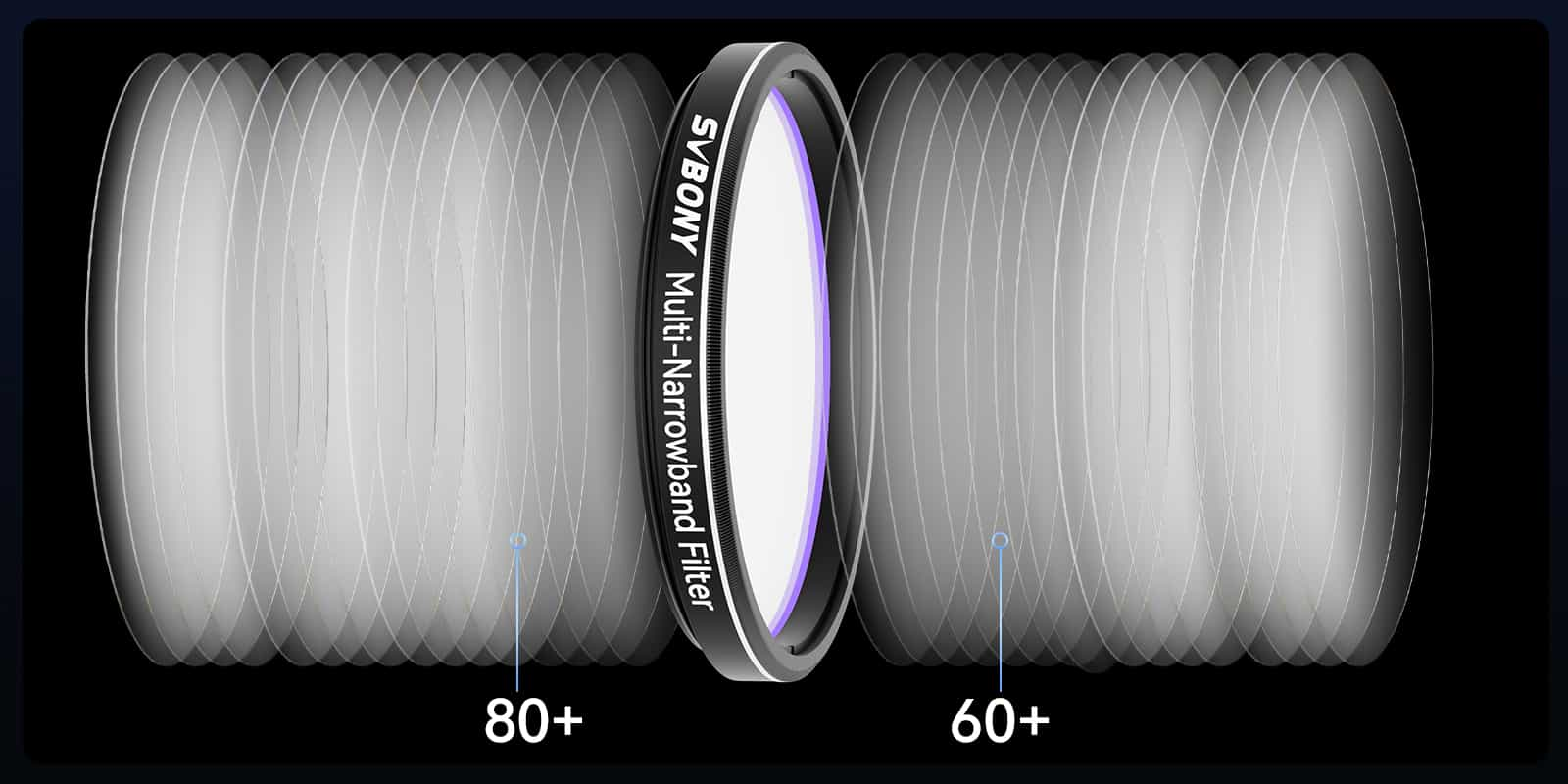- Cut-off depth ≥OD4; highly efficient in blocking urban light pollution or other background light; use this multi-bandpass filter for astrophotography in urban without traveling long distances to the suburbs;
- Compatible with 99% astrophotography systems; if you have different astrophotography systems, no need to prepare dedicated filters, one SV240 can meet your needs due to its high compatibility;
- Photoing more kinds of targets; SV240 multi-narrowband filter select Ha,OIII,H-Beta wavelength effectively can cover almost photoing needs;
- High transmittance; the >90% transmittance in core wavelength of Ha,OIII, H-Beta, more objects for your astrophotography by using this multi-bandpass filter;
- Multi-bandpass filters; without multiple filters' combination for colorful images; rich color in your lens;
- Resistant of BORTLE 8; the multi-narrowband filters can be resistant from Bortle 1 to Bortle 8 cities, suitable for almost all urban;
- 300-1100 mm working wavelength; the wider coverage of this multi-narrowband filter allows it to have a strong ability to tack light pollution.
Note: Optical filters that use infrared light often cause halos in the NIR region; which are exacerbated by the halos produced by the filter itself.
FREE shipping, duty-free Get Full Reviews
Top New Year Gift Ideas: Perfect Presents for Everyone!
Special offers and product promotions
SV240 2inch Multi-Narrowband Filter
SVBONY SV240 multi-bandpass filter is designed for urban astrophotography; it can isolate the Ha; OIII; and H-Beta from the background light pollution efficiently; you can astrophotography in urban without a long struggle to suburbs; save your time and high efficiency; and it is suitable for photoing most galaxies; reflection nebulae; emission nebula; and star clusters; and so on. The filter is ideal for astronomers who are already using color cameras and prefer not to switch to a monochrome camera setup. With the SV240, you can capture more details that cannot be achieved with the SV220.
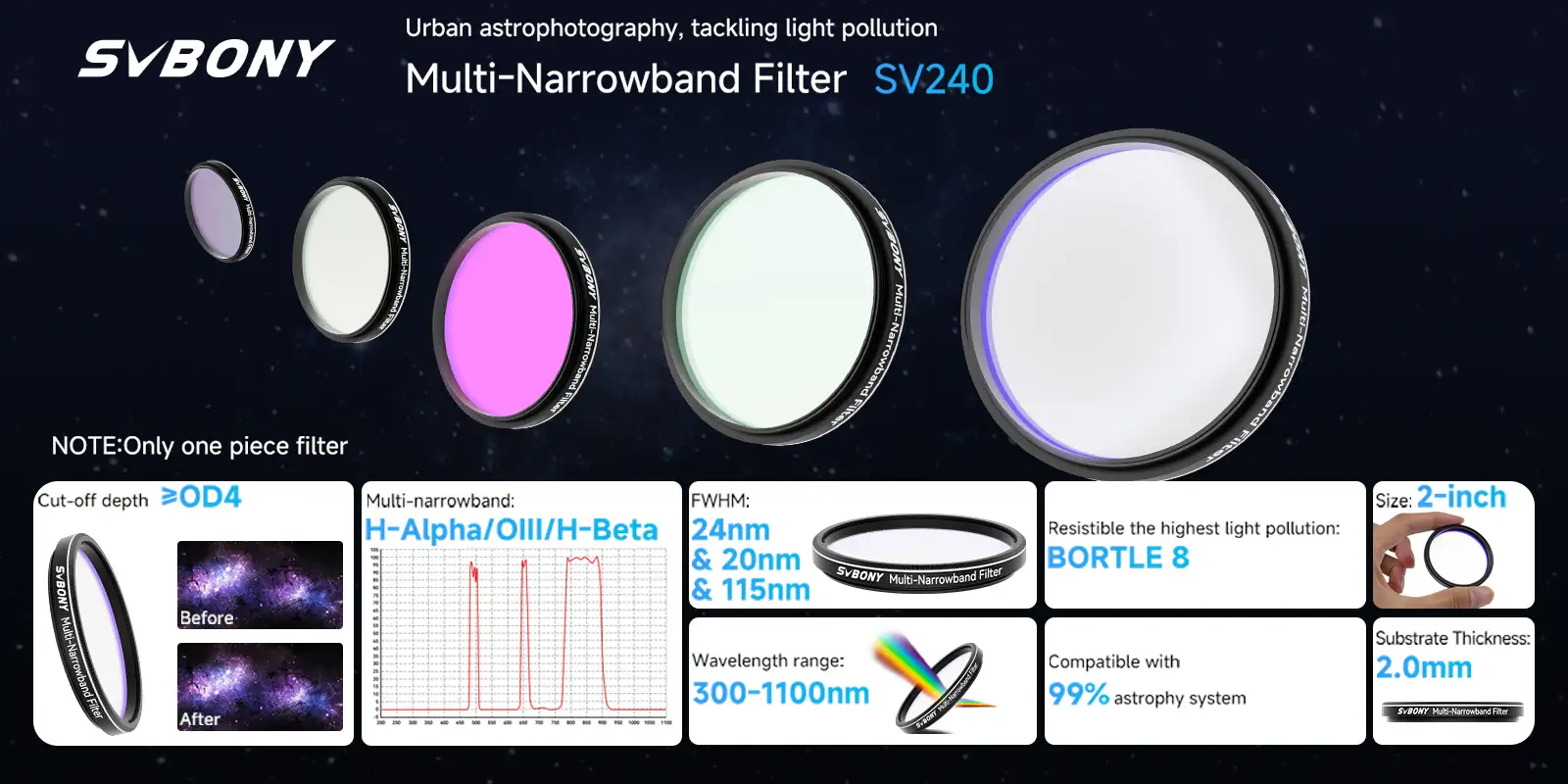
Cut-off Depth ≥ OD4
Highly efficient in blocking urban light pollution or other background light; use this multi-bandpass filter for astrophotography in urban without traveling long distances to the suburbs. The SV240 narrowband filter can block the influence of urban light pollution and other background lights efficiently.
FWHM; 24nm; 20 nm; 115 nm; the wide wavelength and high transmittance of this multi-bandpass filters in Ha; OIII; H-Beta wavelength helps the colorful image photoing.
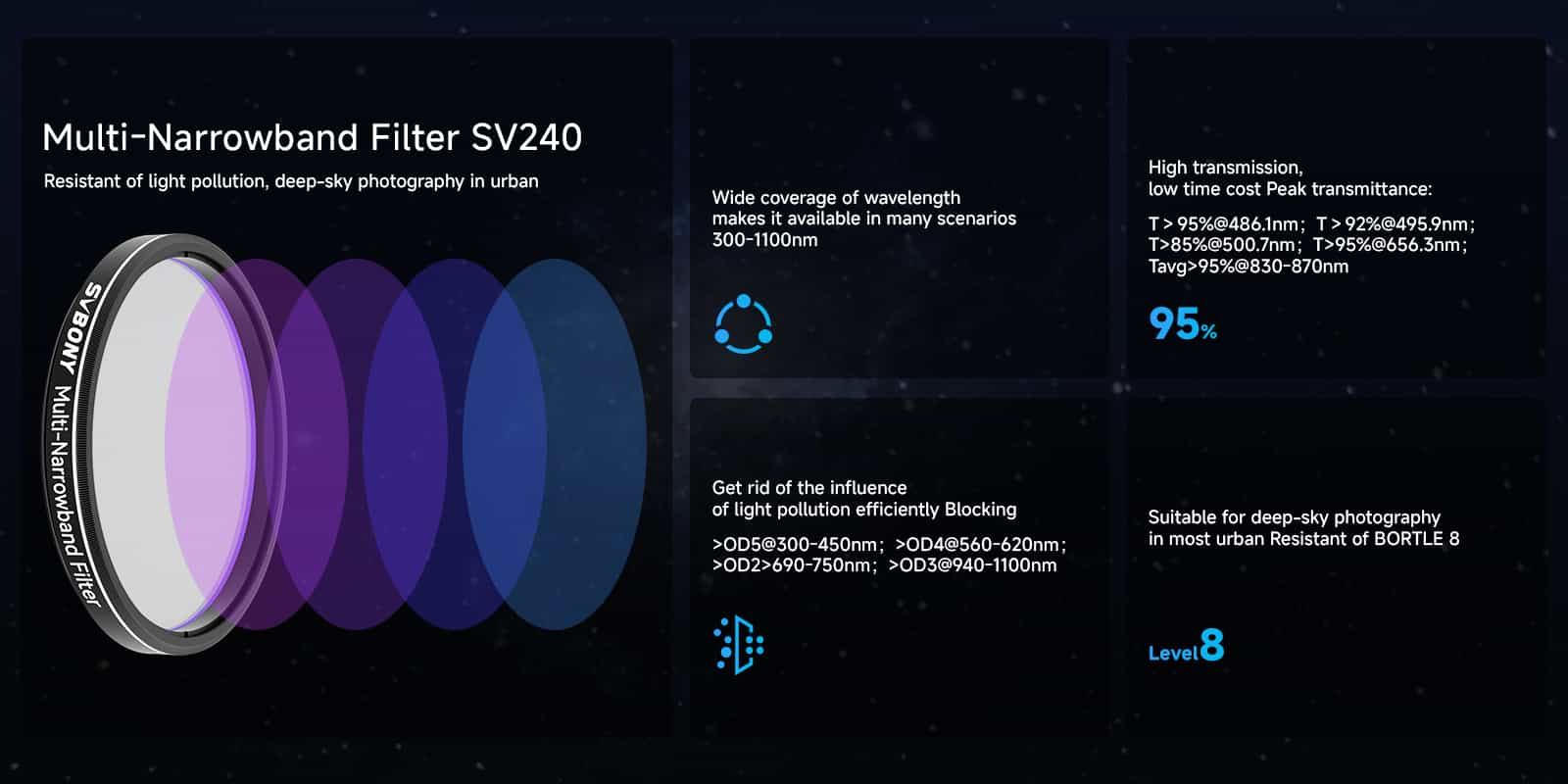
Resistant of BORTLE 8
The multilayer coating design for the remarkable performance in tacking light pollution and high transmittance in core wavelength. Astrophotography in urban comfortable. The strong ability to tacking light pollution up to BORTLE 8 allows it can be used in multiple cities, and no need to go to the suburbs. Time and labor saving.
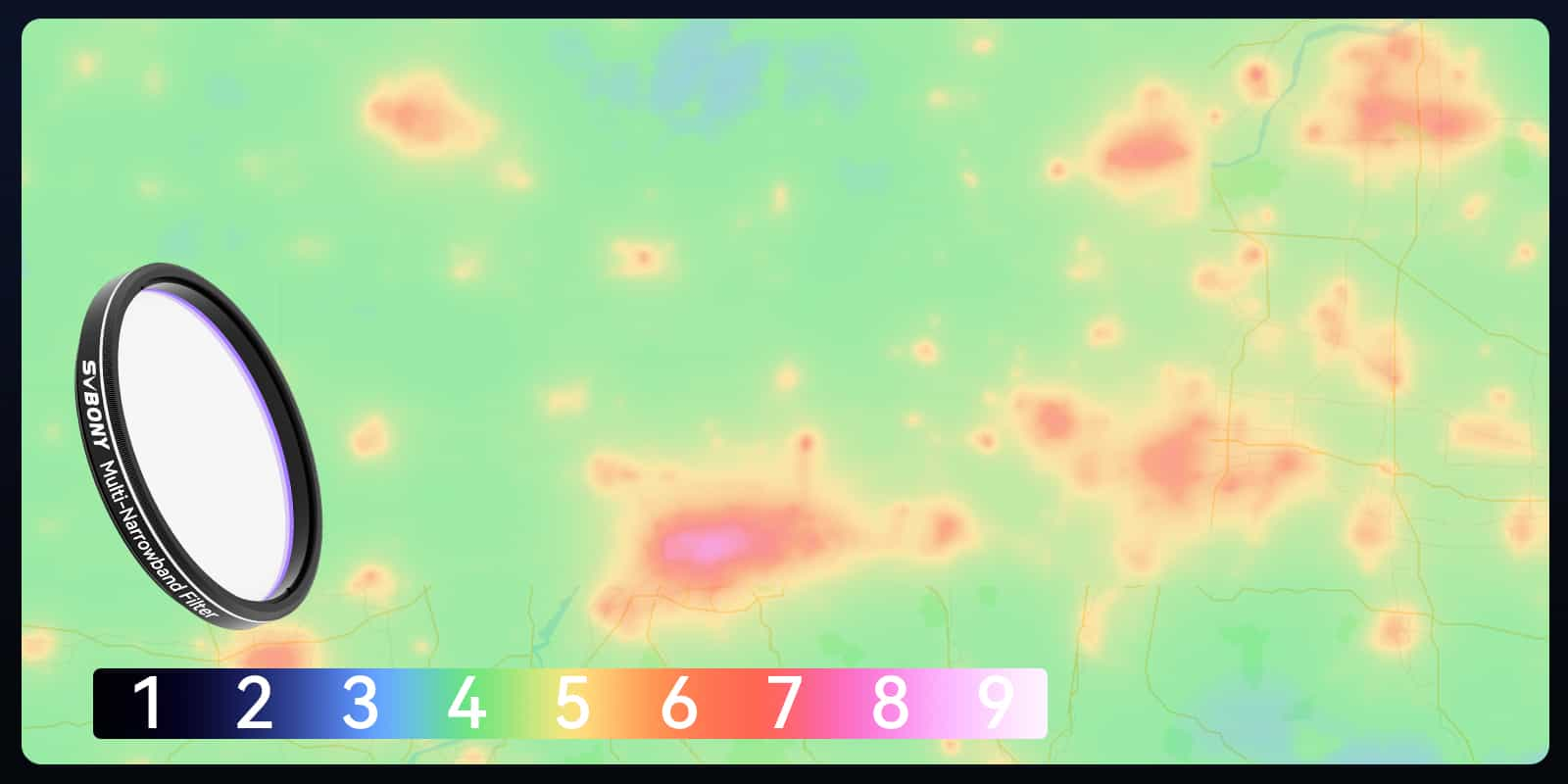
Wavelength Range of The Filter
The wide range allows the filter to be used in multiple scenarios. Stronger resistance to light pollution. Near IR (NIR) is blocked up to 1100nm. High ability to process the wavelength from 300 to 1100nm. Effectively isolate the light pollution band.
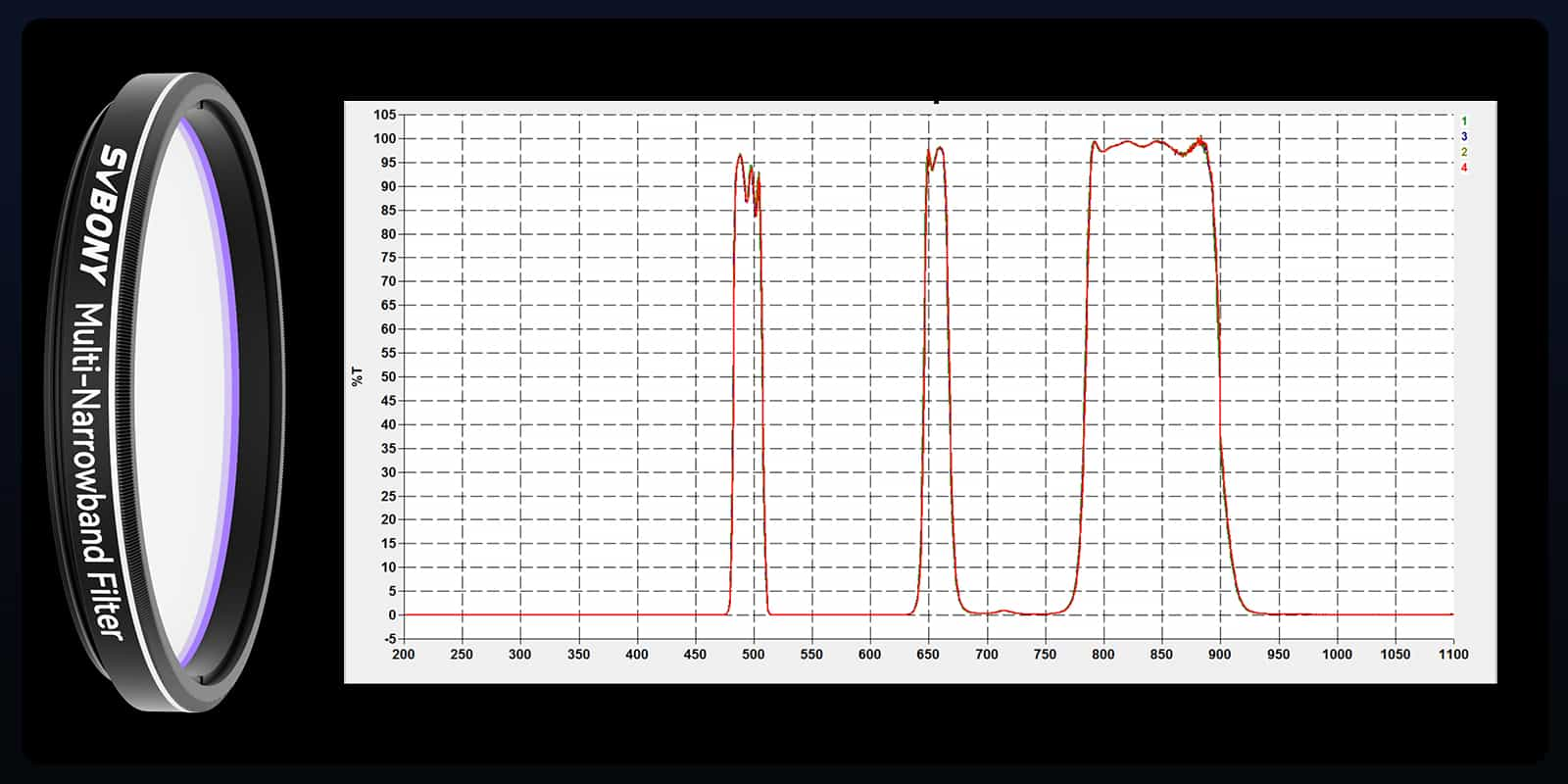
Average Transmittance >90%
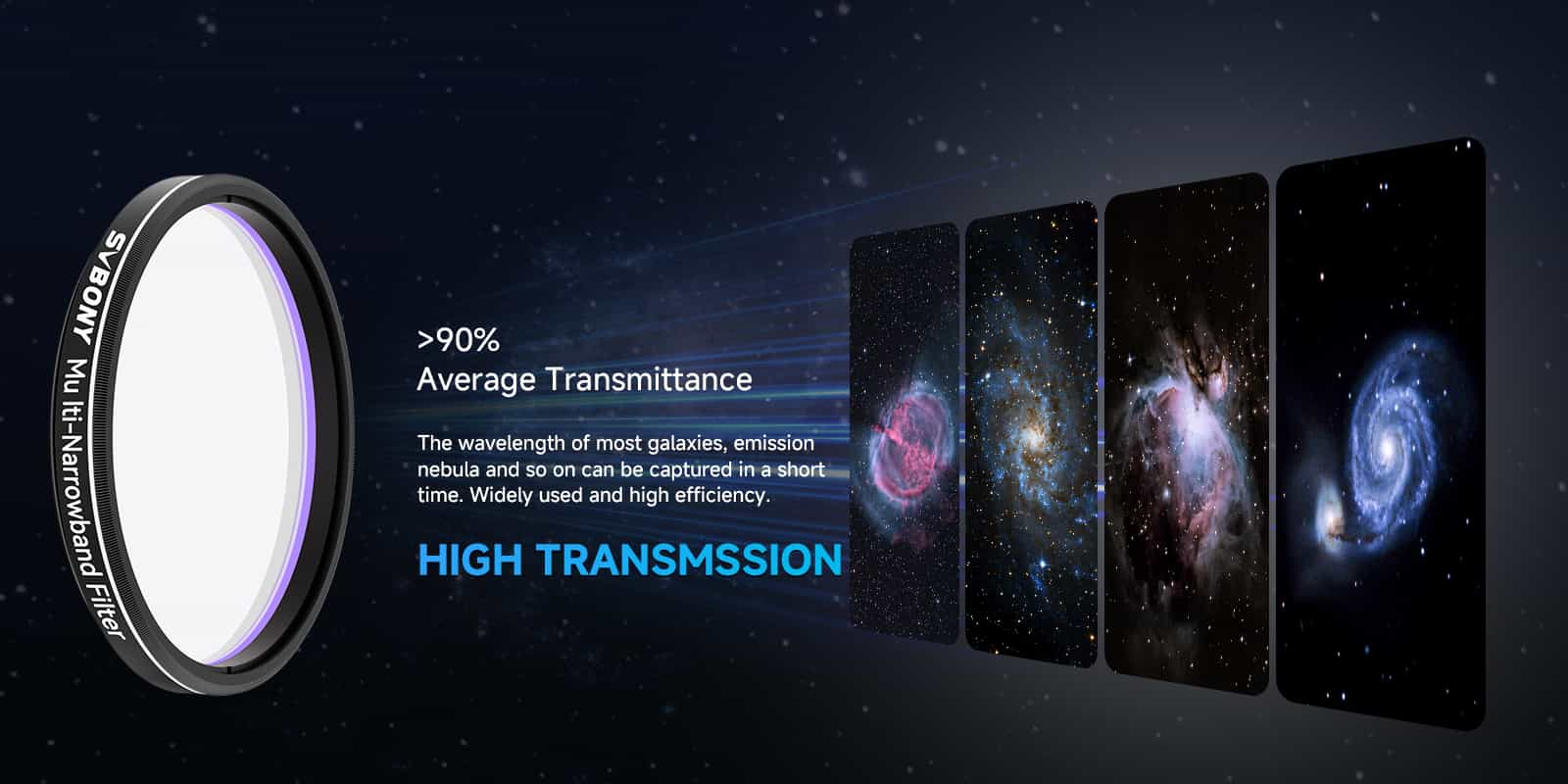
Photography All Kinds of Targets
The wavelength can meet the astrophotography needs of most galaxies, reflection nebulae, emission nebula, star clusters, and other broad-spectrum targets. And the targets can be captured in a short time, which is widely used and high efficiency.
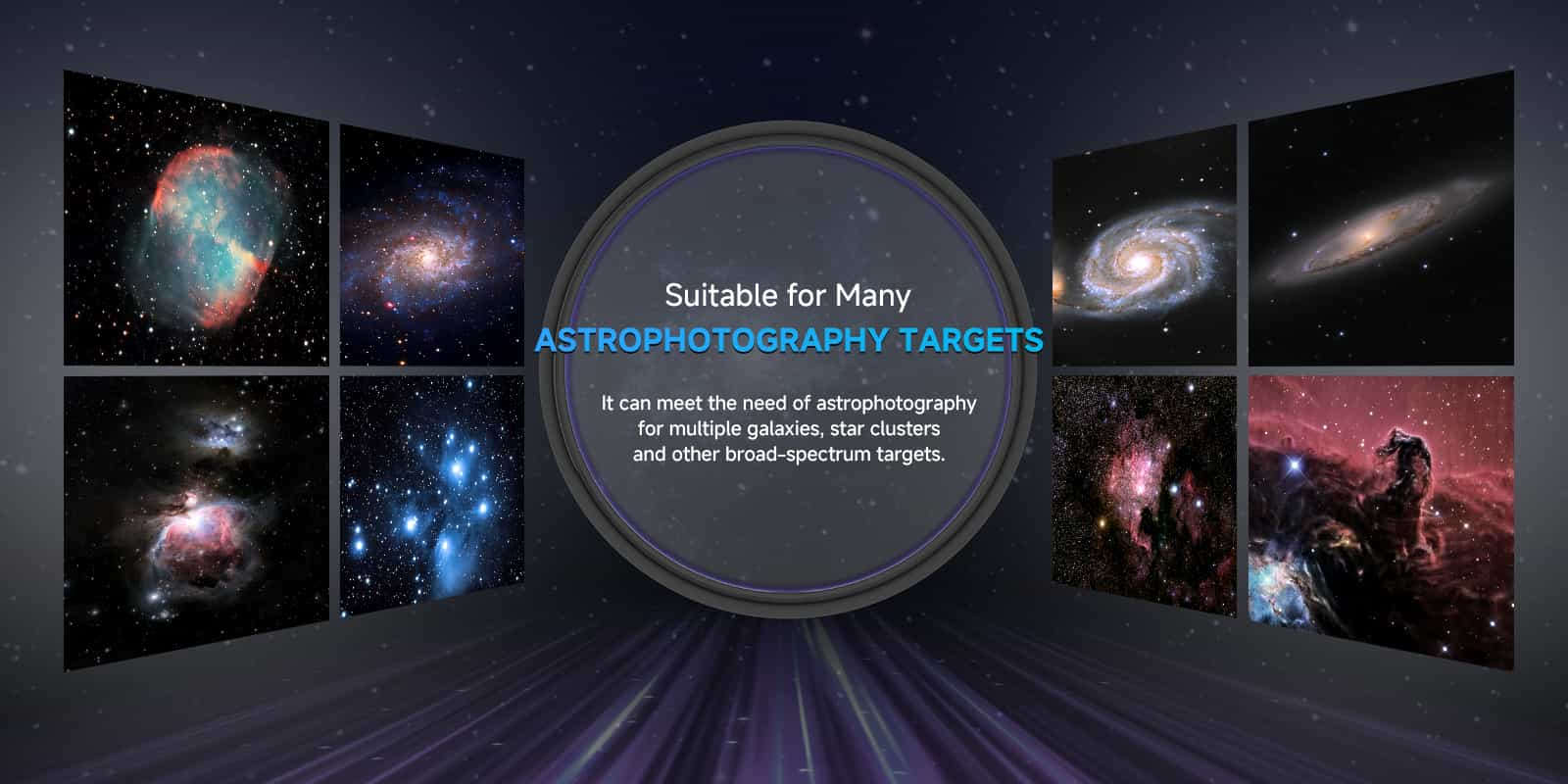
If you have different astrophotography systems, no need to prepare dedicated filters; one SV240 can meet your needs due to its high compatibility. Considering the high quantum efficiency (QE) characteristics of the latest cameras (such as IMX585 and IMX464) in the near-infrared region and also this region less susceptible to artificial light pollution, the SV240 multi-narrowband filter adds high transmission in the near-infrared (NIR) band. This spectrum design improves the image signal-to-noise ratio and contrast by capturing signal in visible bands and NIR regions while maintaining good colour balance and being easier to manage in post-processing.
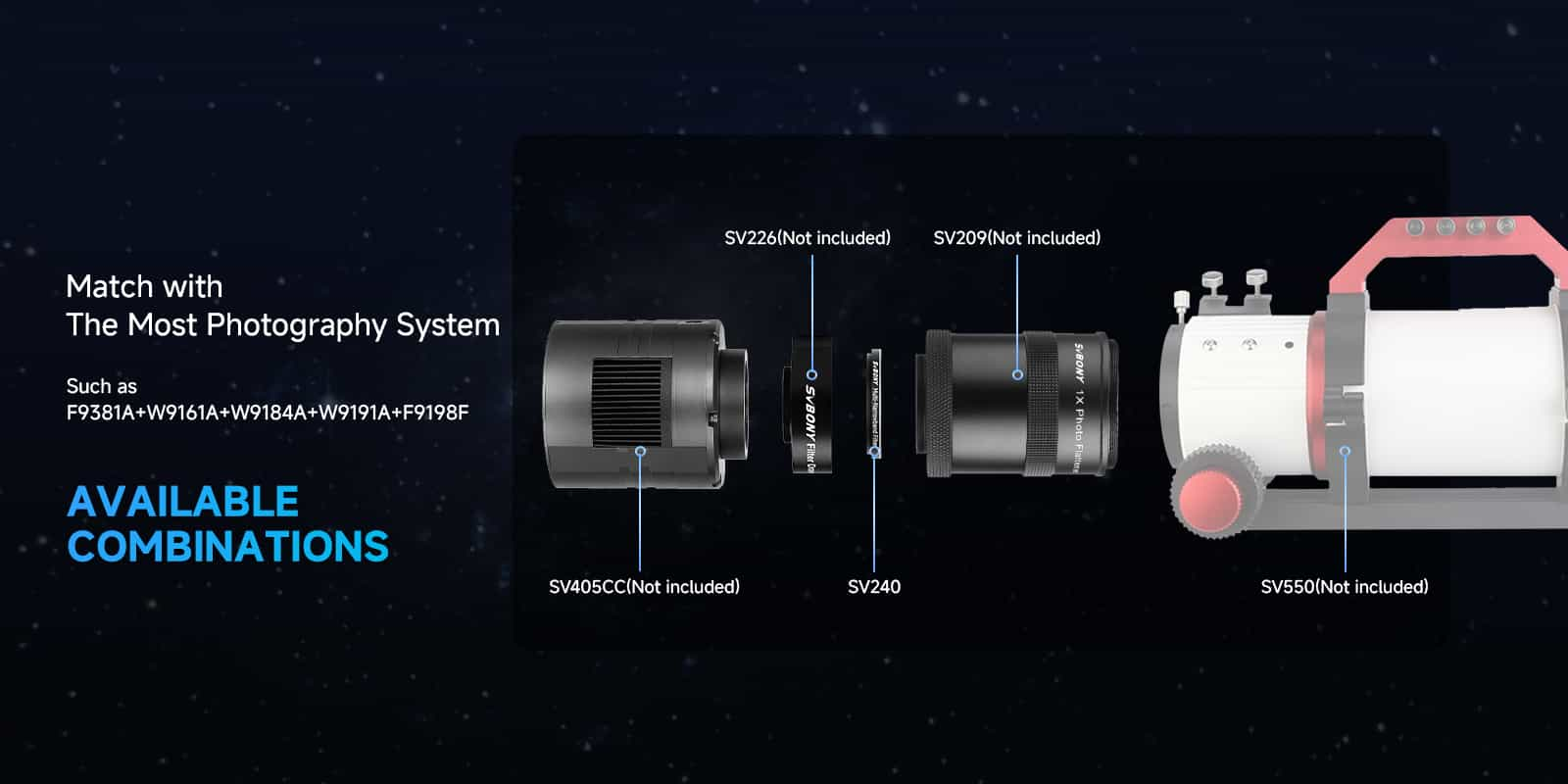
The SV240 astronomical telescope filter efficiently blocks light pollution to capture galaxies, nebulae, and star clusters. Its high compatibility, near-infrared transmission, and multi-wavelength coverage make it ideal for urban settings.
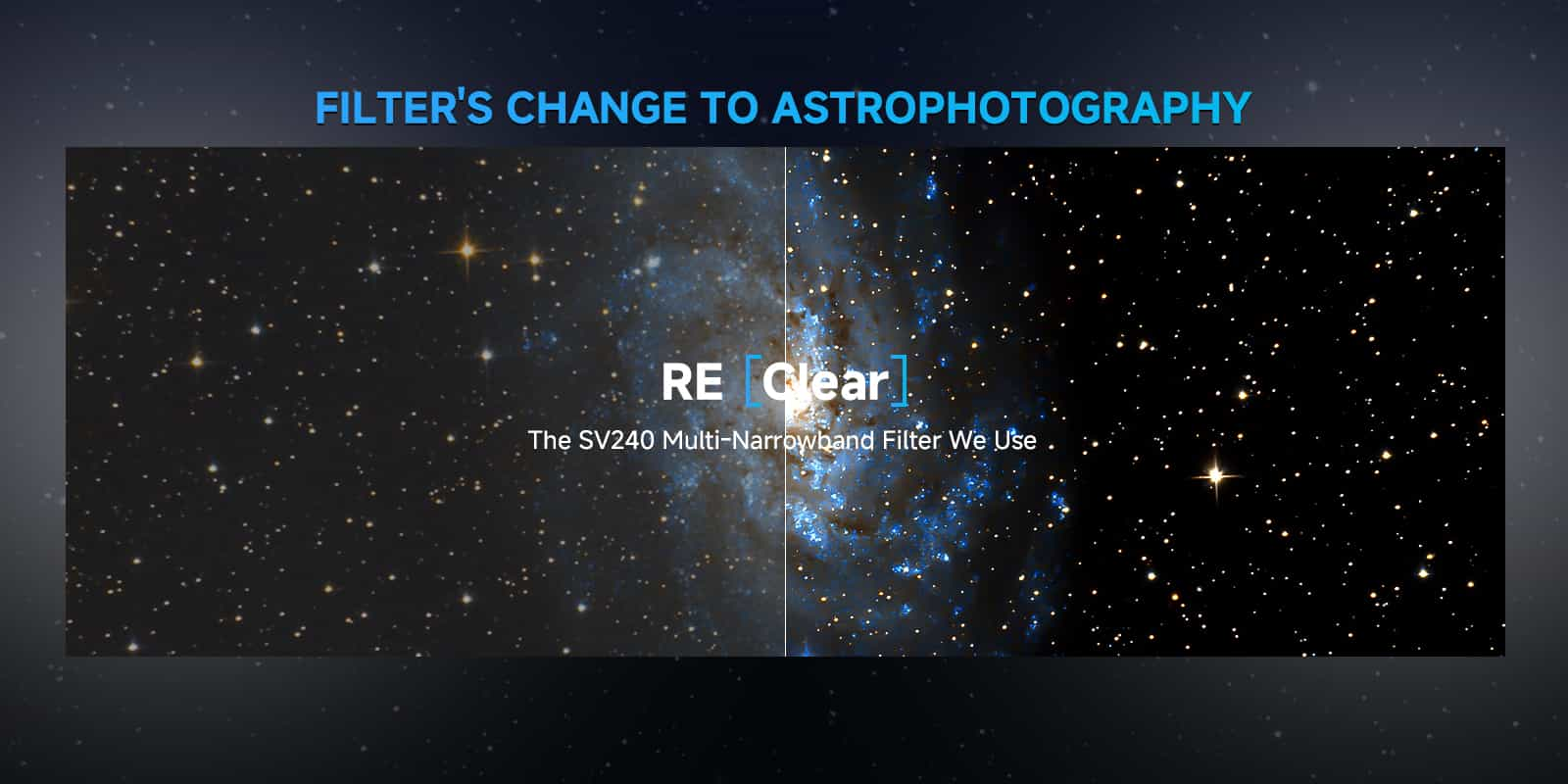
Parameter Comparison
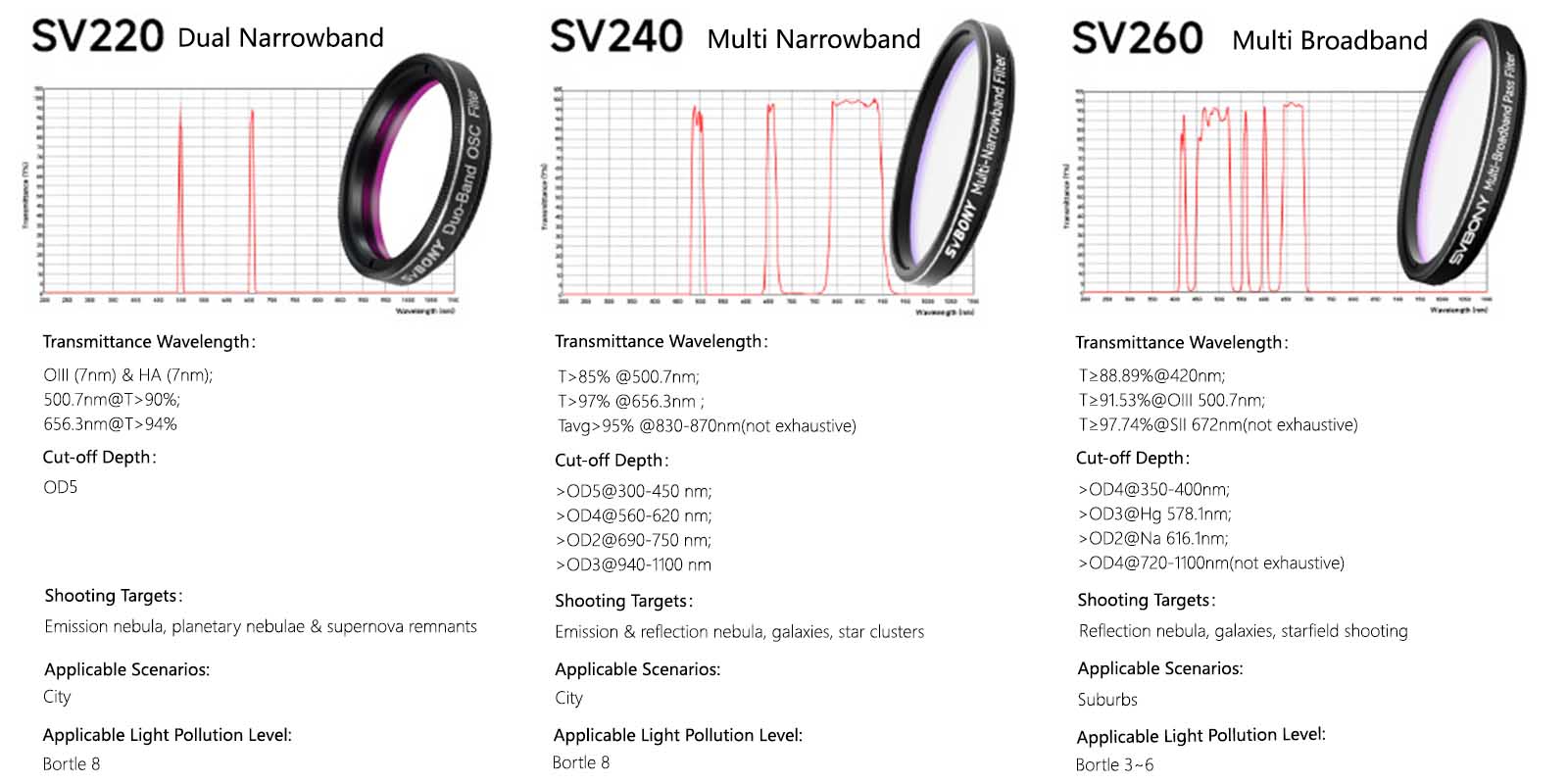
SV 240
Great Companion for OSC Camera
Great product that works as advertised!
This is the best visual UHC filter I've used to date.
parfait
A nice 3 bands HA, O3 and another band!
Filters: You need
Absolutely Love It!
It is a very interesting design!!
Really nice filter with competitive price
|
Brand |
SVBONY |
|
Model |
SV240 |
|
Name |
Multi-Narrowband Filter |
|
Size |
2-inch |
|
Substrate Thickness |
2mm |
|
Clear Aperture |
44mm |
|
Wavelength Range |
300-1100nm |
|
FWHM |
24nm & 20nm & 115nm |
|
Blocking |
>OD5@300-450nm;>OD4@560-620nm;>OD2>690-750nm; >OD3@940-1100nm |
|
Peak Transmittance |
T>95%@486.1nm;T>92%@495.9nm;T>85%@500.7nm;T>95%@656.3nm; Tavg>95%@830-870nm |
|
Surface Quality |
60/40 |
|
Surface Parallelism |
1/4λ |
|
Thread |
M48x0.75 |
|
Single Thread |
Yes |
|
Net Weight |
12.5g / 0.44oz /0.027lb |
-
-
Feature
- 1.Can be used to image most deep sky objects, including galaxies, reflection nebulae, emission nebula, and star clusters from a Bortle 1 location to Bortle 8;
2.Multi-Narrowband filter properly designed for astrophotography both in light polluted, allows for imaging in bright man-made light pollution and moonlit conditions;
3.Take color images without needing to combine images with multiple filters, most useful for One-Shot Color cameras;
4.High transmittance of the main emission lines Ha/OIII/H-Beta in the visible region enhances SNR and contrast;
5.Passing near-infrared region is for shooting deep sky objects that cannot be imaged with other filters without NIR transmission.
-
FAQ
-
- Q1: What is the difference with SVBONY SV220 mainstream dual narrowband astrophotography filters?
A1: Dual narrowband filters are mainly used for emission nebulae, planetary nebula, and supernova remnants astrophotography. SV240 can be used for both traditional emission nebulae and galaxies, reflection nebulae, and star clusters.
- Q1: What is the difference with SVBONY SV220 mainstream dual narrowband astrophotography filters?
- Q2: Which equipment can be used with SV240?
A2: Because SV240 has high transmittance in the near-infrared region, we recommend NIR-enhanced sensors, such as the IMX585 and IMX464. The filter is more suitable for cameras with AR protective glass as they can capture both NIR and visible band signals.
- Q3: Do these filters produce halos? What kind of primary mirror are recommended?
A3: Using the infrared astrophotography filter will often cause halos in near-infrared; We recommend using SV240 with a reflective or APO refractor. (The SV240 filter utilizing infrared tend to cause haloing in the NIR regions. This is because the anti-reflection properties of off-the-shelf cameras' optical systems (optical window and sensor cover glass) are optimized for the visible spectrum only, not for the NIR region. Thus, haoling at the camera end in the unoptimized region becomes more apparent, coupled with haloing from the filter itself.)
- Q4: Does the SV240 filter provide an improvement in photoing broadband galaxy targets?
A4: Yes, SV240 can be seen as the combination of SV220 and UHC filters, and has remarkable performance both in narrowband and broadband targets. -
- Q5: Is the SV240 filter suitable for visual observation?
A5: No, the multi-narrowband filter is not suitable for visual observation and not designed for imaging or observing the Sun.
- Q5: Is the SV240 filter suitable for visual observation?




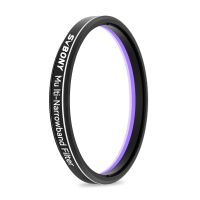

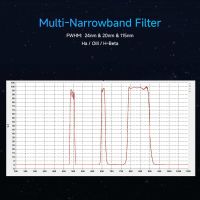
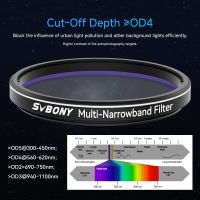
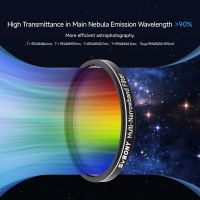
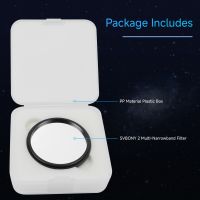
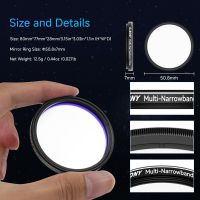
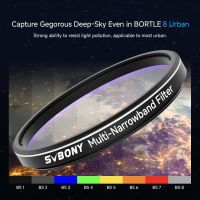
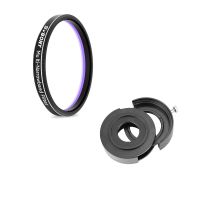
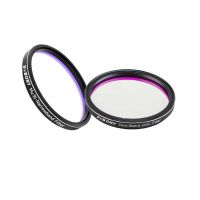




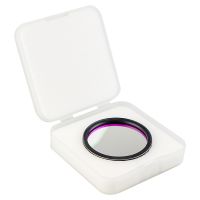

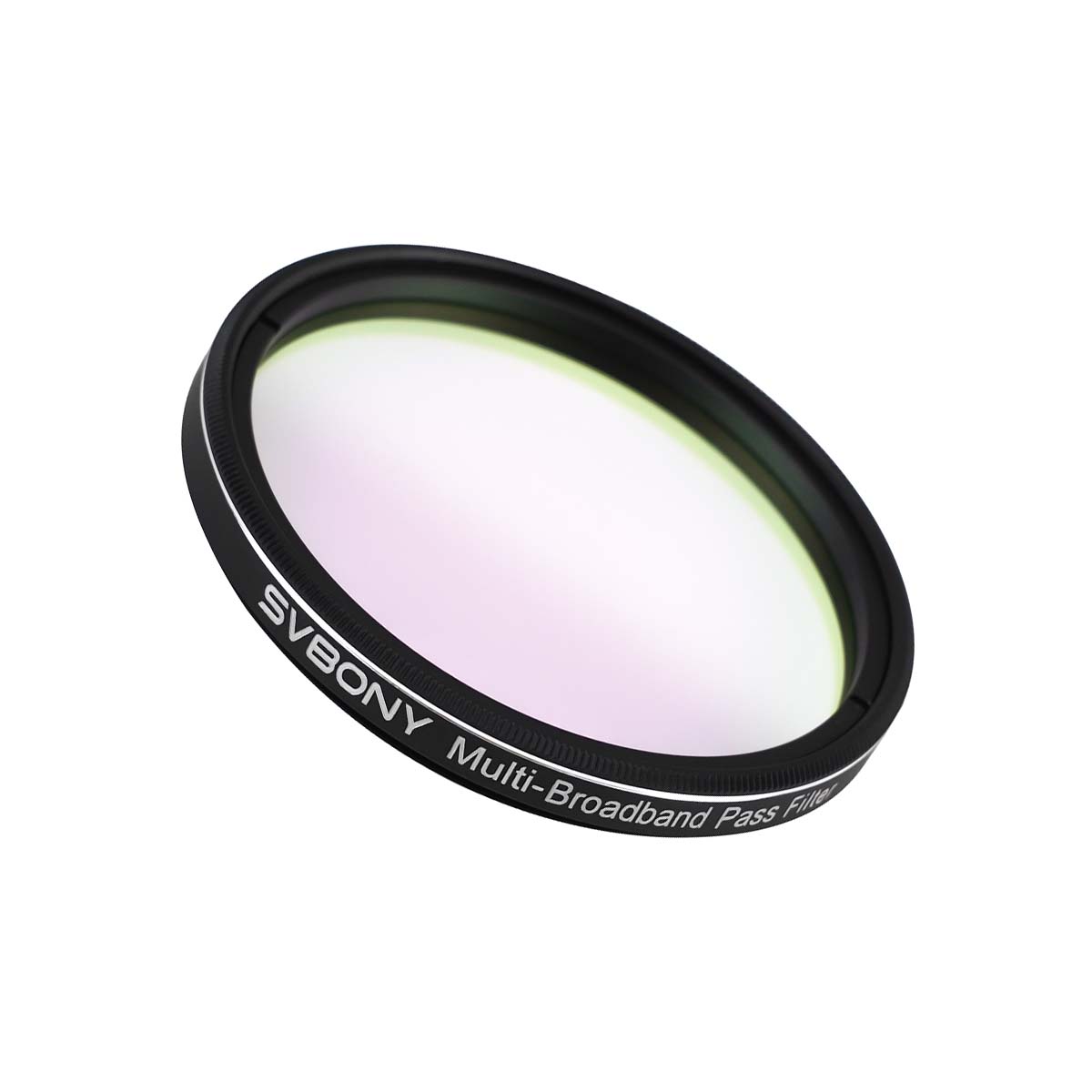

.jpg)

